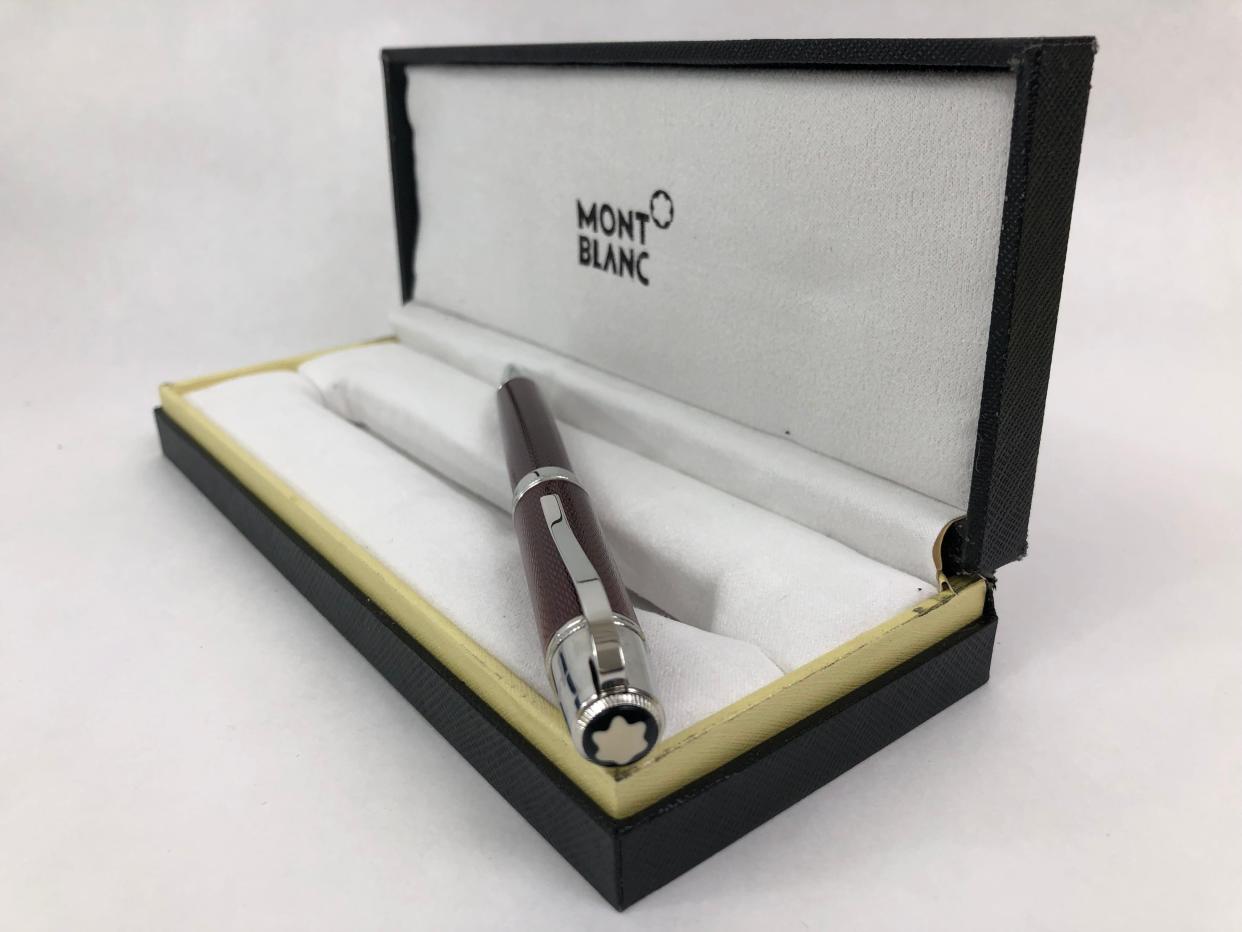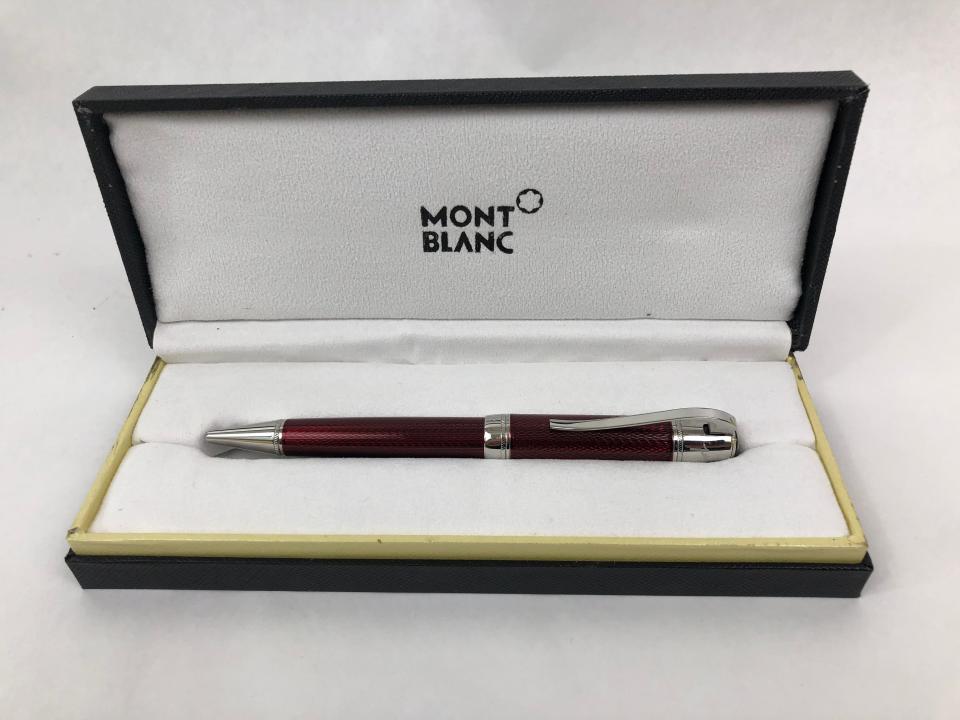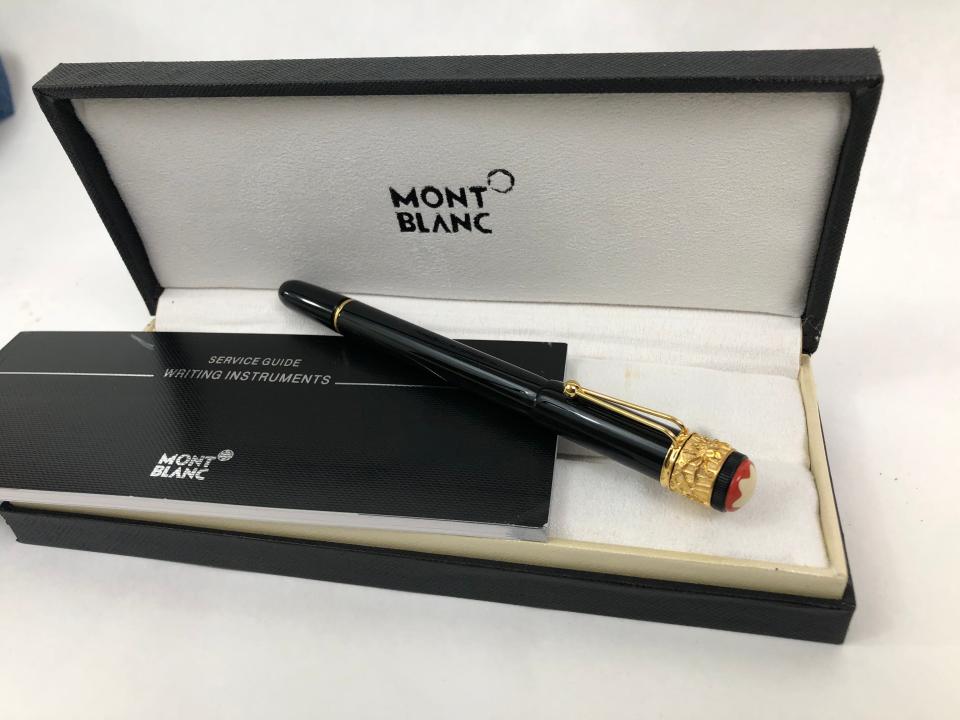Antiques: Fine writing comes from fine pens

It may come as a surprise to any of you millenials out there who still read newspapers, but there was a time when people actually exchanged handwritten notes by mail. Those of us now within sight of Social Security would send notes of congratulations, sympathy or thanks in a more or less readable cursive script. It took a few days, but there was generally no urgency, and anyway that's what telegrams were for. We used all sorts of writing instruments, mostly pens, and for a few of us lucky enough we used a special pen purchased in a moment of indulgence or received as a gift. Those of extraordinary good fortune used a Montblanc — and still do. Here's why.
First of all, you should know there is Montblanc the pen and Mont Blanc the mountain. The latter is the highest peak in Europe, and towers over the border between France and Italy. Apart from its beauty, it's mostly known as the birthplace of recreational mountain climbing. Montblanc the pen dates back to 1906 with the development of a series of fountain pens by two German partners. Their idea was to design a pen with a built-in inkwell, eliminating the messy dip-and-fill that was common to pens of the day. From its beginning, the firm took the high road, describing itself as makers of "high-class gold and fountain pens." Their first pen was known as the Simplo Rouge et Noir, and by 1913, the Montblanc name and famous white star top were cast in stone.
In 1923, Montblanc introduced its legendary home run as the Meisterstück, a sleek black pen that by decade's end was known throughout Europe. In addition to offering a high-quality product, the company succeeded through clever marketing, creating special-purpose pens for new markets, and advertising in innovative ways. In 1929, Montblac began to engrave the nibs of all Meisterstücks with the number 4810, the height in meters of its namesake mountain. That practice continues to this day.

Faltering during the Depression-era 1930s, the firm nevertheless pulled through and mid-decade acquired a leather goods maker that added greatly to its line. During WWII, the company's factory in Hamburg was heavily damaged, but that setback proved to be temporary and production soon resumed in Denmark. The introduction of ball point pens following the war was yet another obstacle, but Montblanc's high-end positioning allowed it to persevere. By the 1960s, its reputation for premium writing instruments was secure. Montblanc's famous flower had become a status symbol, and was often seen in the hands of President John F. Kennedy, among many others.
Today, the firm lives on, acquired by Dunhill in 1977 but still a sought-after name in the market for luxury goods. Indeed, it has survived while many of its competitors, such as Kaweko, Soennecken, and Faber-Castell, to name a few that have disappeared or exited the category. In the 1980s, the opening of the Asian market to Western firms proved a further boon.
Over the years, Montblanc prices have continued to rise as collectors compete aggressively for rare models. A special order gold-and-diamond Meisterstück recently sold for a whopping $120,000, and even a standard model bought today will set you back several hundred dollars. Nonetheless, bargains appear once in a while in galleries like ours, so watch out for that six-sided star. Picking one up just might put you back on the path to handwritten notes.

Mike Rivkin and his wife, Linda, are longtime residents of Rancho Mirage. For many years, he was an award-winning catalogue publisher and has authored seven books, along with countless articles. Now, he's the owner of Antique Galleries of Palm Springs. His antiques column appears Sundays in The Desert Sun. Want to send Mike a question about antiques? Drop him a line at info@silverfishpress.com
This article originally appeared on Palm Springs Desert Sun: Antiques: Fine writing comes from fine pens

